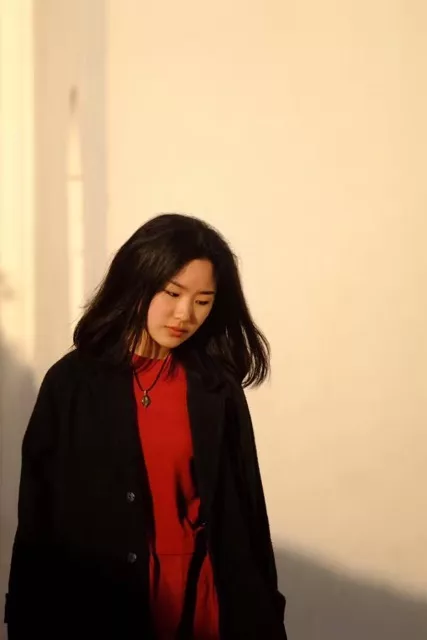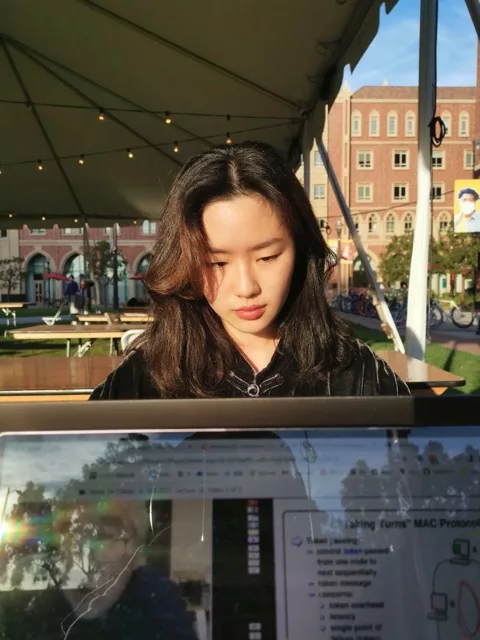
Creating art isn’t about the specific medium or labels for Zoe Zheng, it’s about expression. An accomplished artist of many talents, her latest film Dance of the Angel is visual means of expressing what she felt from mastering the piano composition “Milonga del Angel” by Astor Piazzolla whose title can be translated as “Dance of the Angel.” Zoe perceived the music’s melancholic chords and rhythms as if the angel is struggling and fighting against some force. The logical step in her mind was to manifest this reality for others through her design, directing, and animation skills. Conceiving of and creating the film “Dance of the Angel” by herself is a testament to the compulsion Zoe feels to create art; it’s not a decision for her, it’s a necessity. Garnering wins from the Short Film Factory and others, this animated film received resounding praise throughout the film community for its merging of surreal qualities with the performance of its main character. An official selection of the Experimental Music & Dance Film Festival, Animation Block Party, Supernova 2020, Digerati Emergent Media Festival, and others, “Dance of the Angel” displays the incredible skill of Zoe Zheng, as well as her empathy for the internal reality of other artists.

Zoe readily admits that she cannot help herself when it comes to controlling her creative inclinations. An accomplished pianist of many years, she often sees images in her mind that accompany the music she plays. When it came to “Milonga del Angel”, the desire she felt to materialize them was unavoidable. Switching to animator/filmmaker mode, Zoe set about designing the concepts she perceived so clearly in her head. The character of an angel and the tango style which the musical piece is written are combined in a female dancer swaying and twirling about against a cathedral-inspired backdrop. The twisted and kaleidoscopic dances of the angel in this film are enchanting in themselves but they develop into a series of visually empathetic moments in which the viewer can feel the angel losing herself in the performance. Zoe remarks, “This experimental design popped into my head when I was listening to the music and appreciating the beautiful melody while thinking how torn apart the angel(s) must have been. This tension of shattered beauty reminded me of the kaleidoscope; dazzling and ever-changing but a process whose beauty requires tearing up the old patterns to create new ones.”
There is an undeniable dreamlike quality to “Dance of the Angel”, as many have noted. With her design and animation technique in making this film, Zoe has given access to the artistic state of mind which offers both a euphoric and potentially dangerous space. Existing somewhere between the mind and the soul, moments like those found in this film are an altered state. Zheng has made a remarkable depiction of this with “Dance of the Angel.” Those who are steeped in such a pursuit instantly recognize what is being communicated in this animated film. Zoe notes that she regularly creates as a means of testing herself and her individual voice. None who view “Dance of the Angel” could question this fact. The artists herself relates, “This animation is more of an experiment on design. The focus was on how do I visualize the music with the information I knew and come up with a brand-new experience that would be engaging at the same time? It is very dreamlike because of the design process. I learned the piece and did the research on the music and its background and tango, then I sat down with pen and paper, without references, drew what came to my mind. Many times I wanted to look at real life references for inspirations but I curbed that urge and thought out the whole thing without basis in reality, because I thought that way I could create something very unique. Once I came up with the initial designs, I added details and made the film. It’s all created from the subconscious hence the dreamlike quality. I wanted to create this film without any references. The process of figuring out everything; a new style, how it moves, how it looks, completely in your own mind, this took a lot brain power but it also allowed it to be unique and fresh and personal.”
Writer : Basil Thomson